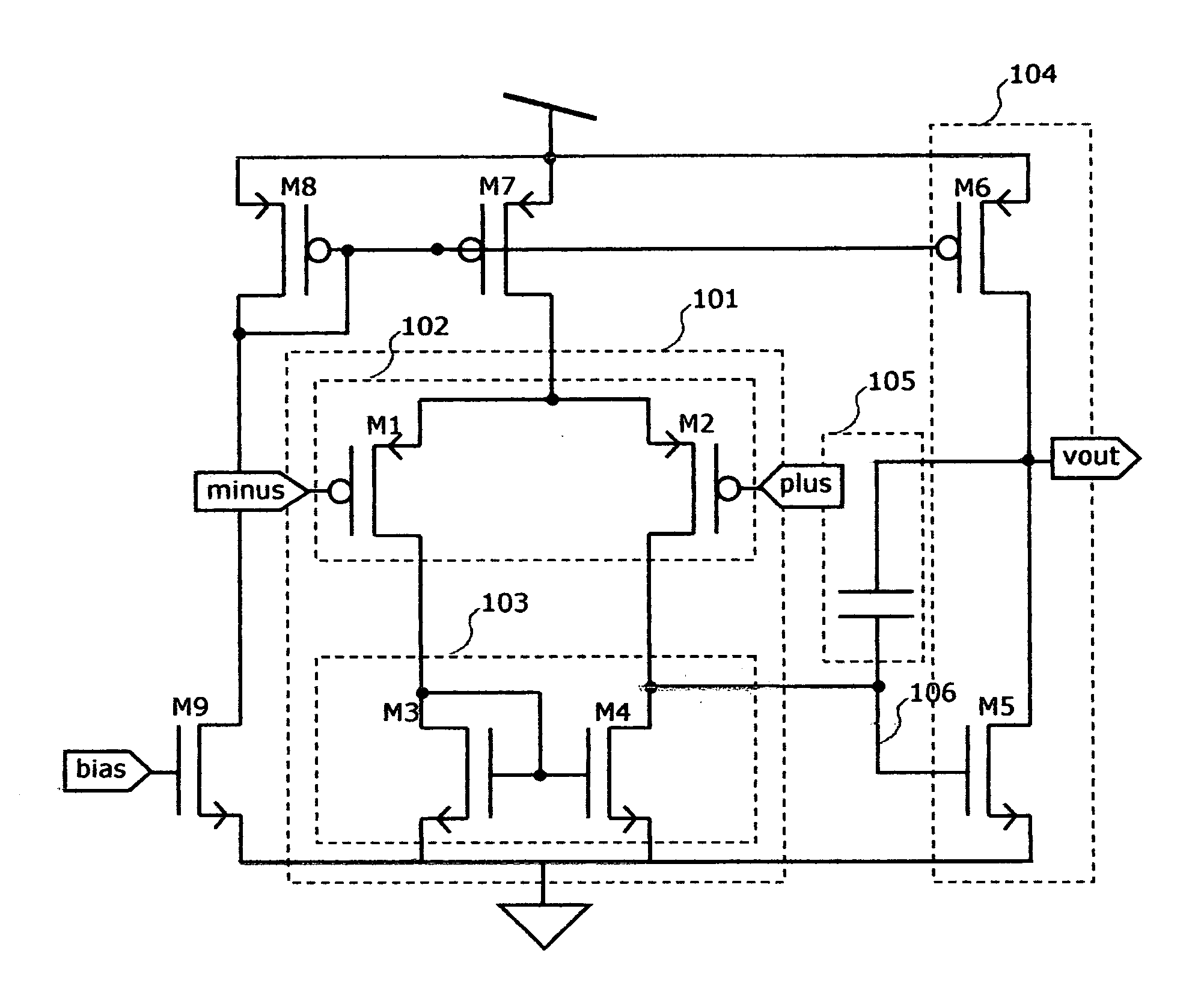Low offset rail-to-rail operational amplifier
a technology of operating amplifier and rail-to-rail, which is applied in the direction of amplifiers, amplifier modifications to reduce detrimental impedence, and amplifiers with semiconductor devices/discharge tubes, etc. it can solve the problems of bipolar transistors with finite input impedance and add significant cost, and create inaccuracies in the tens or hundreds of percent when dealing with low-level signals, and achieves simple and auto-routing rail-to-rail. low
- Summary
- Abstract
- Description
- Claims
- Application Information
AI Technical Summary
Benefits of technology
Problems solved by technology
Method used
Image
Examples
embodiment
Preferred Embodiment
[0050] Turning to FIG. 4 there is shown the preferred embodiment of the present invention. A differential input voltage level shift circuit is provided in two parts 401 to shift the plus input and 402 to shift the minus input. The inputs plus and minus are connected to a first input stage differential pair 405 and to the level shift circuit. The shifted input voltages appearing at the outputs of the level shift circuit on nodes 403 and 404 are connected to a second input stage differential pair 406 which is of the same type P or N as the first input differential pair, and will usually be identical. The differential outputs from the two input differential pairs are recombined by simple current summation at nodes 407 and 408, which are also connected to the single input stage current mirror 409.
[0051] While FIG. 4 shows P-type differential pairs, the skilled practitioner easily recognizes the same design principles apply to an amplifier made with N-type pairs, or ...
PUM
 Login to View More
Login to View More Abstract
Description
Claims
Application Information
 Login to View More
Login to View More - R&D
- Intellectual Property
- Life Sciences
- Materials
- Tech Scout
- Unparalleled Data Quality
- Higher Quality Content
- 60% Fewer Hallucinations
Browse by: Latest US Patents, China's latest patents, Technical Efficacy Thesaurus, Application Domain, Technology Topic, Popular Technical Reports.
© 2025 PatSnap. All rights reserved.Legal|Privacy policy|Modern Slavery Act Transparency Statement|Sitemap|About US| Contact US: help@patsnap.com



